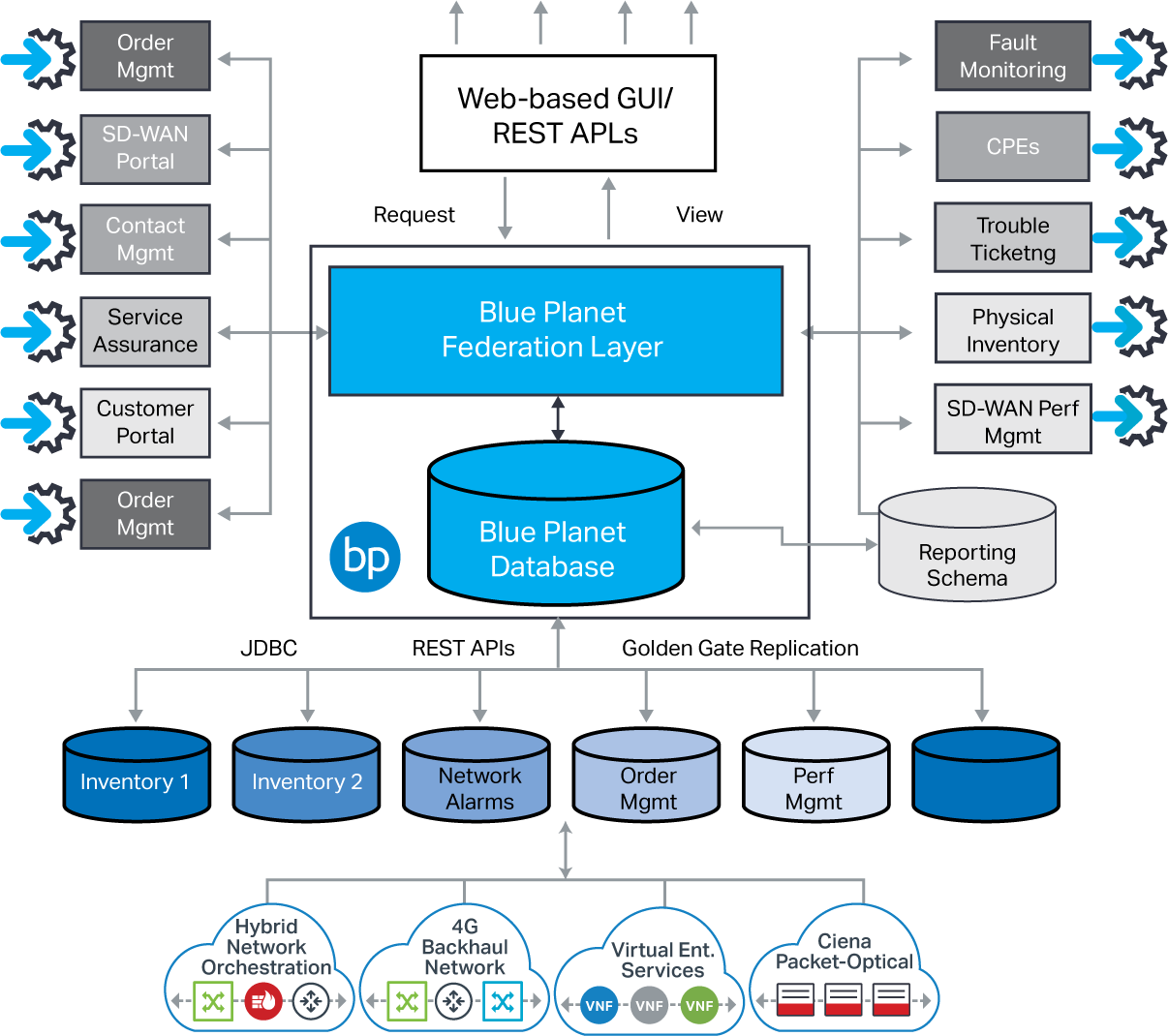What Is Federation?
The vast majority of network providers around the world have a common problem: inefficient network operations due to too many, fragmented Operational Support Systems (OSS). The same can be said for large enterprises or utility companies that operate sizable networks.
Operations personnel have to use different siloed systems for different processes, such as service ordering, network planning, and troubleshooting. They have to manually correlate data and ensure that actions taken in one system trigger the correct next action in another system. That leaves a lot of room for error and creates complex workflows that take a long time to complete. With OSS driving the business, however, network providers are reluctant to make wholesale OSS changes, let alone decommission their legacy systems.
With federation, operators can leverage their existing investments in OSS while making their data more cohesive and easily accessible—hence more valuable. The federation platform, which sits on top of the OSS, takes data from multiple sources and brings it into a single view that allows operations engineers and staff to be more efficient, respond to customer service calls faster, and resolve design and provisioning issues using optimized processes.
For example, a technician who once had to swivel to five or six different systems to address an end-customer issue can now access the federated platform to view the affected service path and investigate potential root causes. In the field, this use case has been shown to save 20 minutes per call on a typical 60-minute call duration—a reduction of more than 30 percent.

As shown in Figure 1, different types of datasets can be federated from different systems, including physical inventory, alarms, services, and performance metrics. Furthermore, operators can perform network discovery to capture the real-time state of network resources, as well as the logical services running over that infrastructure. The discovered network data can also be federated with other OSS data to gain the most accurate view of the network.
Federation aligns with existing business processes by integrating its inputs and outputs with existing systems through open APIs. Armed with a comprehensive view of the network, operators can enact requisite actions on the specific source system from the centralized interface. The interface is engineered to be user-friendly using the latest Web technologies. Visualization of the network and service resources can be customized to be consistent with existing tools, so personnel do not have to be retrained.
As a solution, federation is proven to be faster, less costly, and less risky than data migrations to net-new systems. Since the federation platform resides on top of existing systems, solutions can be deployed within a matter of months. Over time—once operators gain a comfort level with the federated platform—they may choose to eliminate some of the underlying legacy inventory systems altogether in favor of a single inventory system.
Federation allows network providers to decouple business processes from the underlying OSS, which can be very powerful. This enables the business to embark on business-critical strategies without adversely impacting user efficiency, requiring additional training, or affecting customers. In fact, federation dramatically improves operational efficiency, accelerating business processes and positively impacting customer satisfaction.
How Ciena helps
To help service providers, enterprises, and utilities get started on their path to more efficient, automated operations, Blue Planet Inventory offers a suite of capabilities founded on multi-domain federation. The software federates network data from multiple inventory and assurance systems to provide a unified view of the current state of both physical resources (network devices) and logical resources (customer services). This foundation enables value-add applications such as network discovery and data reconciliation, network planning, assurance, and dynamic inventory.
Learn more about Blue Planet Inventory.
